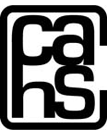PROFILE OF GOVERNING BODIES OF NEW YORK CITY VOLUNTARY HOSPITALS
While the CCAHS was following the lead of others in some ways who had written about this subject (See Hospital Boards-An Inevitable Prospect for the 1970s, Lowell Bellin, M.D. M.P.H., and First Deputy Health Commissioner, Department of Health, NYC, HSMHA Health Reports, August 1971, Vol. 86, No. 8, Pages 674-681) none seemed to have struck such a strong chord or provoked such an angry reaction as this CCAHS publication. The reason on reflection seemed obvious. While others wrote generically about the failures of voluntary hospitals, their governing bodies and the fact that governing body members’ percent of support of the total hospital income or deficits dropped to about 1%. The claim that hospital governing body members had to be rich because they made major financial contributions to hospitals was no longer justified but seen as only an excuse to continue what was an undemocratic tradition. Others wrote that governing bodies had to become more reflective of the changes in society and its demographic dimensions.
CCAHS did what no other publication to that date did: we actually published the names of the governing board members and included specific and often quite embarrassing data about their actual length of service and number of meetings they attended during the previous year. With that disclosed data it was clear that if they were held accountable for their performance most would be asked to leave. As the consumer movement grew as predicted in the cited Bellin article, most of his implied predicted changes did not materialize. Instead of acknowledging the validity of criticism about the almost all rich white professional men serving on voluntary hospital governing boards, the board members reacted with fear, anger and embarrassment. Rather than establish mechanisms to transform the board membership to represent the changing demographics and call for more women, people of color, and representatives of the poor or those served by the hospitals (i.e. consumers) many board members retired, resigned, and refused to knuckle under what they perceived as mob pressure. This impression is commonly seen when masses of people start to find their voice to claim their rightful place in the sharing of the economic, social and political pies. It was no accident that Marie Antoinette’s response about increasing unrest of the mobs in Paris was “Let them eat cake.” when they demanded nothing more than enough food to survive.
In some cases the ability to change the composition of the boards was limited by the religious origins of the hospitals. In other situations the inbreeding of the boards was based on the historical traditions that are found in the old ‘father and son’ unions. But the obvious conclusion was that it is not easy to change the entrenched undemocratic mix of public and private sectors. The old guard was not going to yield to what they saw as riff-raff lead attempts to take over their esteemed institutions of learning, teaching or healing. More importantly being a member of a hospital governing body once meant underwriting the losses caused by charity care and insufficient collection of charges and more recently discounts given to public and private insurers. By the 1960’s those memberships offered an opportunity to enrich themselves, enjoy special perks, rub shoulders with the medical giants, gain influence, have a building or service named after them or a loved one or an opportunity to add their membership to their resumes. Governing body membership had the intangible advantage of feeling that they were cleansing their souls.
The CCAHS publication for 4.7 pages and several tables analyzed board membership demographics and named names, gave the year the individual joined the governing body, expressed the number of meetings attended, etc. This was for many members of these bodies an intrusion of their privacy and an obvious embarrassment. Yet, many board members had no objection to articles an pictures in the media associating them to hospitals as charitable contributors and philanthropists. For a few members these disclosures were the equivalent, especially in light of the consumer movement, seen as revolutionary and an unwanted and unwarranted reaction to the closed and somewhat secret upper class society that ruled the vastness of New York City’s voluntary hospital world; a world that in 1972-3 covered over 60% of the City’s hospital beds and 67% of private sector bed use. Calls for inclusion of consumers on the governing bodies were viewed as calls for class warfare against the rich. Despite America’s stated calls for equality, fairness, and opportunity for all any effort to reach those goals including a simple set of data about upper crust businessmen’, lawyers’, and health professionals’ control of hospitals was considered dangerous to the status quo. Similar arguments were made about the African-Americans, women and anti-war protesters to undercut the validity of their positions and calls for change.
The background noise surrounding this publication included the then twenty five year old cold war and what was being billed within America as externally controlled social movements against racism, sexism and unjust wars. Everything of importance was viewed through filtered glasses; glasses that made any change, disclosure or effort to democratize America or decolonize countries or organizing Americans as a threat to the upper class members in America (now often referred to as the ‘1%’). Publicizing their names and showing that their so-called historic roles were not accurately portrayed in the early 1970s became part of the mosaic painted by the super and just plain rich elite that CCAHS was an enemy of American values and the status quo. In retrospect, most of the information has again disappeared into the back rooms of our society. Americans have been tamed and become withdrawn using social media as a voice of discontent. In the 1970’s CCAHS publications was the social media for consumers.
